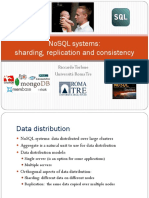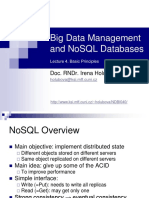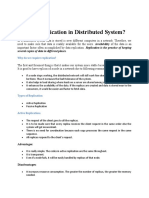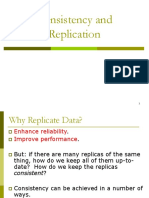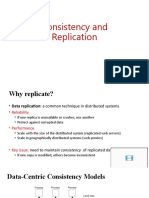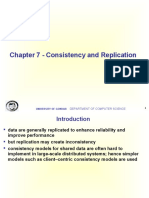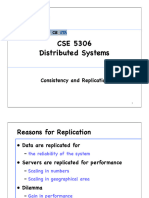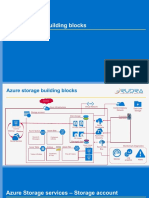0% found this document useful (0 votes)
17 views35 pagesCH-07 Replication
The document discusses replication in distributed systems, highlighting its importance for increased reliability, availability, performance, and fault tolerance. It outlines various replication schemes, challenges, and consistency models, including passive and active replication methods. Additionally, it addresses the trade-offs between maintaining consistency and the benefits of improved performance through replication and caching techniques.
Uploaded by
078msdsa001.baikunthaCopyright
© © All Rights Reserved
We take content rights seriously. If you suspect this is your content, claim it here.
Available Formats
Download as PDF, TXT or read online on Scribd
0% found this document useful (0 votes)
17 views35 pagesCH-07 Replication
The document discusses replication in distributed systems, highlighting its importance for increased reliability, availability, performance, and fault tolerance. It outlines various replication schemes, challenges, and consistency models, including passive and active replication methods. Additionally, it addresses the trade-offs between maintaining consistency and the benefits of improved performance through replication and caching techniques.
Uploaded by
078msdsa001.baikunthaCopyright
© © All Rights Reserved
We take content rights seriously. If you suspect this is your content, claim it here.
Available Formats
Download as PDF, TXT or read online on Scribd
/ 35









